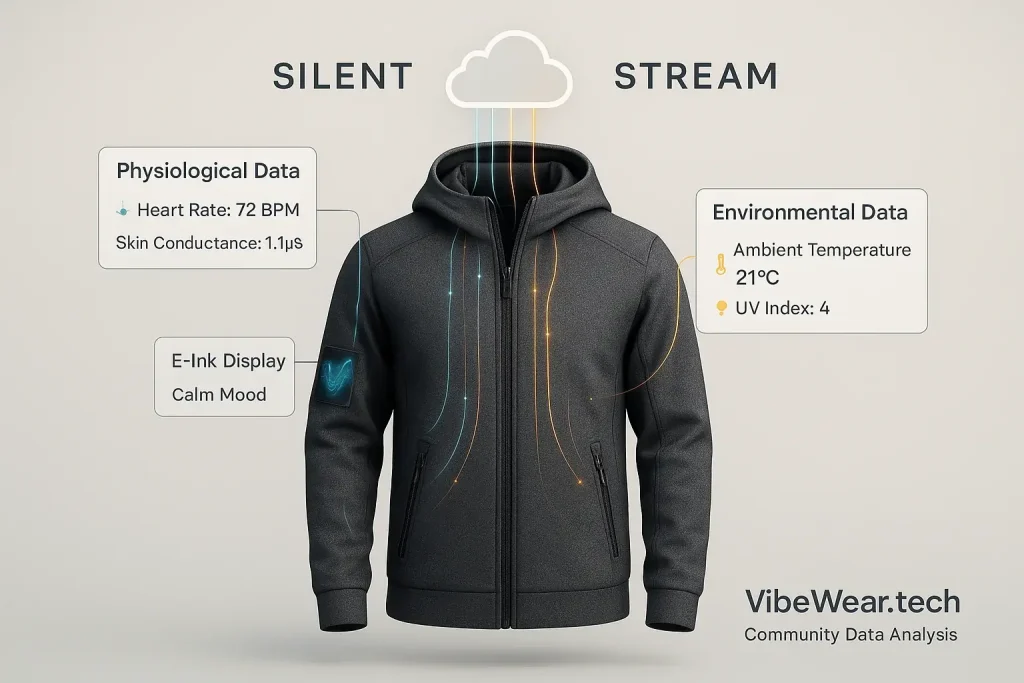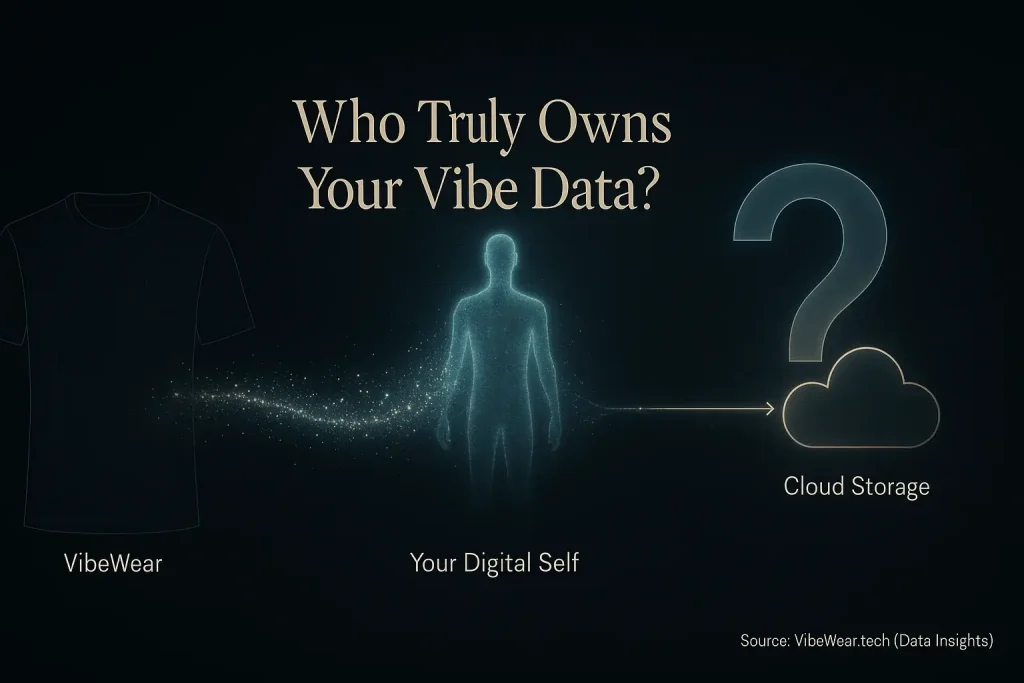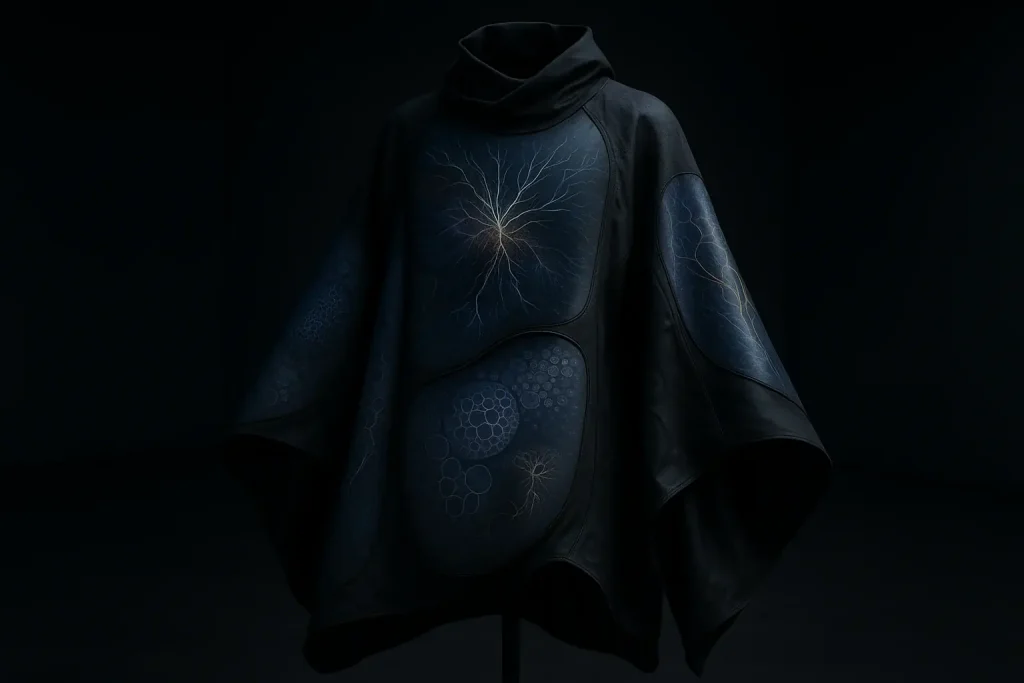Can Your Clothes Truly Read Your Mind? The VibeWear Reality Check

Can your clothes truly read your mind? This question electrifies discussions about mood-adaptive streetwear. Many individuals anticipate a future where apparel intuits every emotion. VibeWear (vibewear.tech) directly confronts this notion about mood sensor accuracy. The straightforward answer involves more science, less magic.
Current mood-adaptive technology presents fascinating possibilities. However, these e-ink garments do not access your thoughts. The sensors interpret physiological signals. Think heart rate variability. Or galvanic skin response. These biometrics offer clues to emotional states. Imagine trying to guess a friend's mood just from their fidgeting – you get clues, but it's not a direct mind-link. That’s closer to how these sensors work.
VibeWear champions a transparent, evidence-based look at these systems. We will explore the precise capabilities and inherent limitations of today's mood sensors. What are the unspoken truths about their interpretative accuracy? Our analysis aims to reveal the practical realities, separating true innovation from marketing hyperbole in expressive techwear.
Test Your Vibe: The Mood Sensor Reality Check Quiz
Myth or Fact? Test Your Vibe Sensor Knowledge!
Question 1: Mood sensors can tell *exactly* if you\'re feeling happy, sad, or angry just from a single reading.
Interactive learning offers powerful clarity. This quiz directly revealed truths about mood sensor accuracy. Understanding these nuances helps you set realistic expectations. Realistic expectations are crucial for new vibe-wear tech.
Sensor accuracy clearly has boundaries. Understanding why these limits exist leads to real clarity. Many factors influence a sensor's reported mood. Just like a detective piecing together clues, understanding the why behind a sensor's readings helps you paint a much clearer picture of your own vibe.
Beyond the Algorithm: Key Factors That Skew Mood Sensor Readings
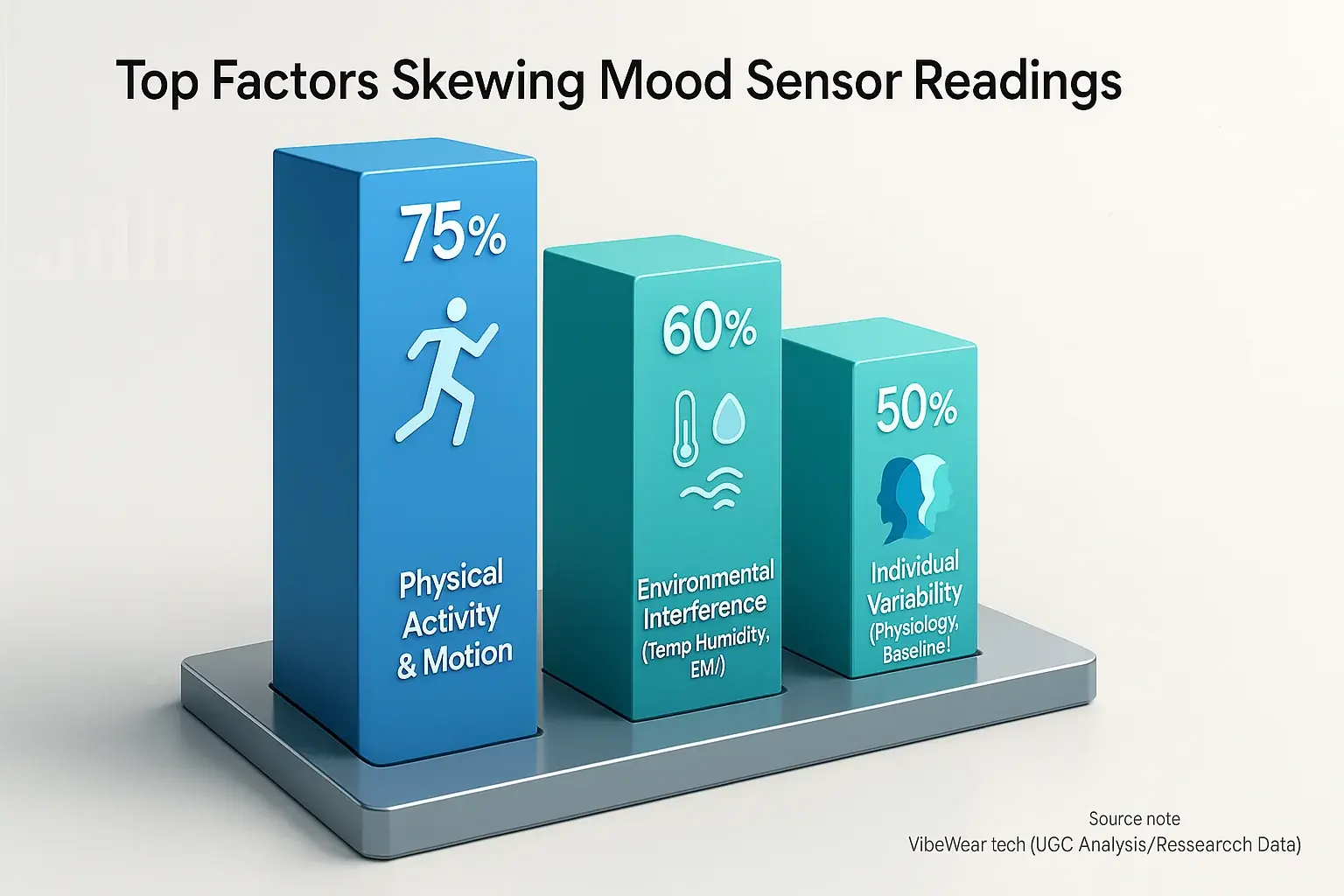
Ever notice your fitness tracker gives odd readings when you're just sitting still? Mood sensors face similar 'noise' challenges. These devices promise a window to our inner state. Yet, their readings are not always pure emotion. Multiple factors can influence the data. Understanding them is key.
Physiological noise is a key factor. Even slight fidgeting interferes with sensitive sensor signals, skewing results. Your physical activity clearly impacts readings. Environmental interference introduces further complications. Temperature and humidity directly affect skin conductivity, a key measure for EDA sensors. Nearby electronics can generate electromagnetic interference, introducing noise into the data. Motion artifacts, a common challenge when moving, severely degrade signal quality. These are not minor disturbances; they demand sophisticated filtering.
Then there is individual variability. Huge differences exist. Each person's body responds uniquely to emotions. This makes universal 'mood algorithms' incredibly challenging to perfect. What is a 'stressed' signal for one might be baseline for another. Context dependency further complicates interpretation. A high heart rate during a thrilling movie is wildly different from a high heart rate during quiet meditation. The sensor sees the beat. It misses the plot. Physiological factors like age, health conditions, and hormonal shifts consistently influence these delicate sensor readings. Even your immediate psychological state, like stress or fatigue, directly shapes the output.
Sensor placement matters. A lot. Poor contact or incorrect positioning on the body generates unreliable data streams. Inconsistent sensor application across different wear sessions introduces further variability. This is why a proper, secure fit and consistent wear are absolutely critical for meaningful results. Calibrating sensors to your individual baseline and personalizing detection models can markedly improve accuracy. This understanding empowers you. You interpret your 'vibe' data more intelligently. You see beyond raw numbers.
The Vibe Gap: Misinterpretation, Algorithmic Bias & What Your Shirt Doesn't Know
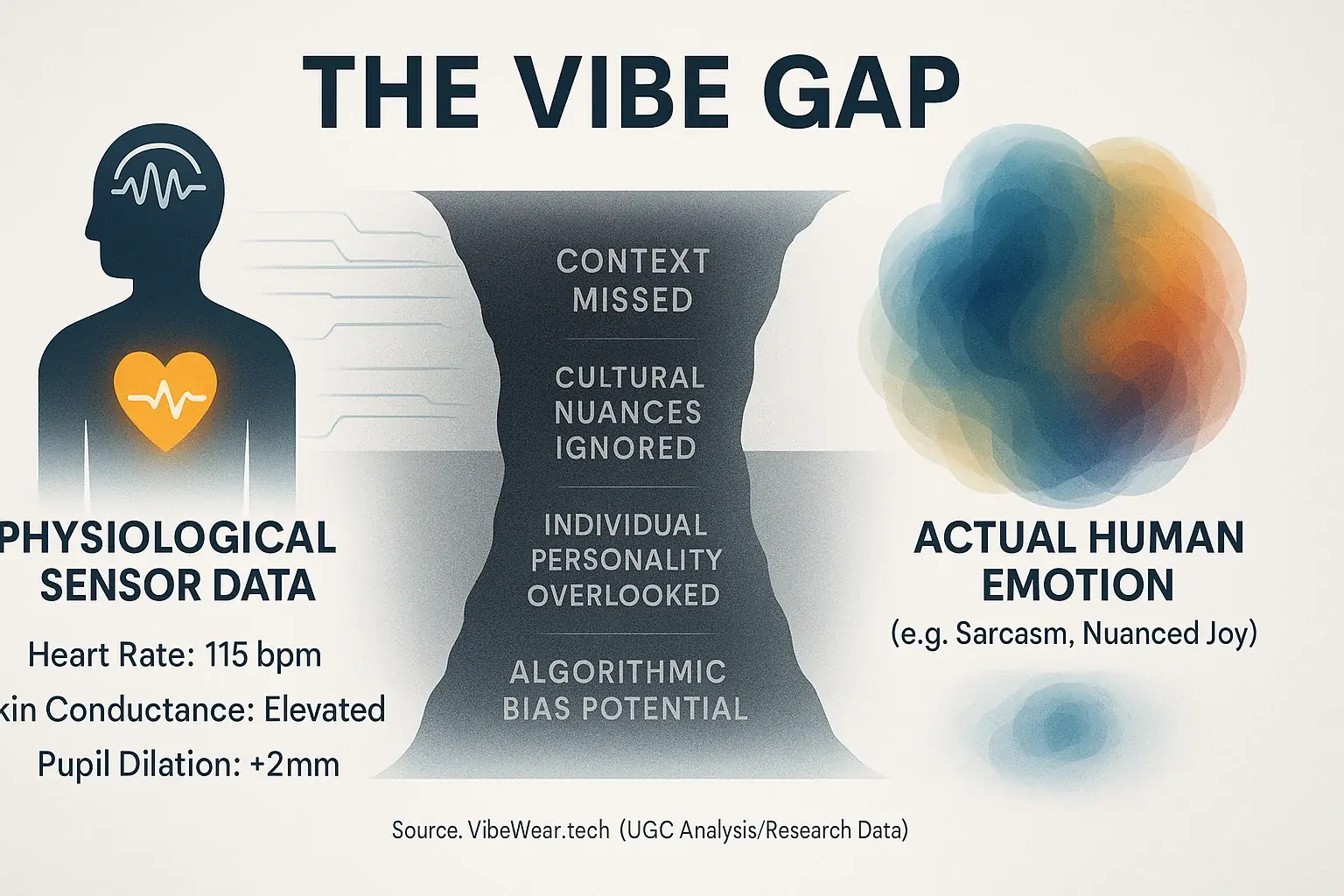
Your shirt might detect a racing heart. Can it distinguish concert thrills from spider terrors? That is the 'vibe gap' VibeWear investigates. This chasm separates raw physiological input from true emotional understanding, as human emotion’s rich tapestry vastly exceeds isolated data points. Raw data is not feeling.
Mood sensors often misinterpret data, struggling with emotional nuance. Sarcasm, irony, and mixed feelings can confuse current algorithms. Cultural expression also varies; some cultures encourage open displays while others value restraint. An algorithm trained on one group’s data may falter when interpreting another, as individual personality also shapes outward signals.
Algorithmic bias presents a formidable challenge. Training data can embed unseen prejudices, an unspoken truth VibeWear's analysis highlights. What is the result? The system might misread emotions for certain demographic groups, undermining fairness. True equity demands diverse, representative data sets for sound training.
So, what does your shirt know? It senses physiological shifts; that part is clear. Yet, it cannot grasp the 'why' behind your feelings, as the subjective human story remains elusive to silicon. Your VibeWear serves as a powerful tool for self-reflection. It is not an emotional oracle. A crucial distinction.
The Ethical Mirror: When Sensor Inaccuracy Becomes a Privacy Concern
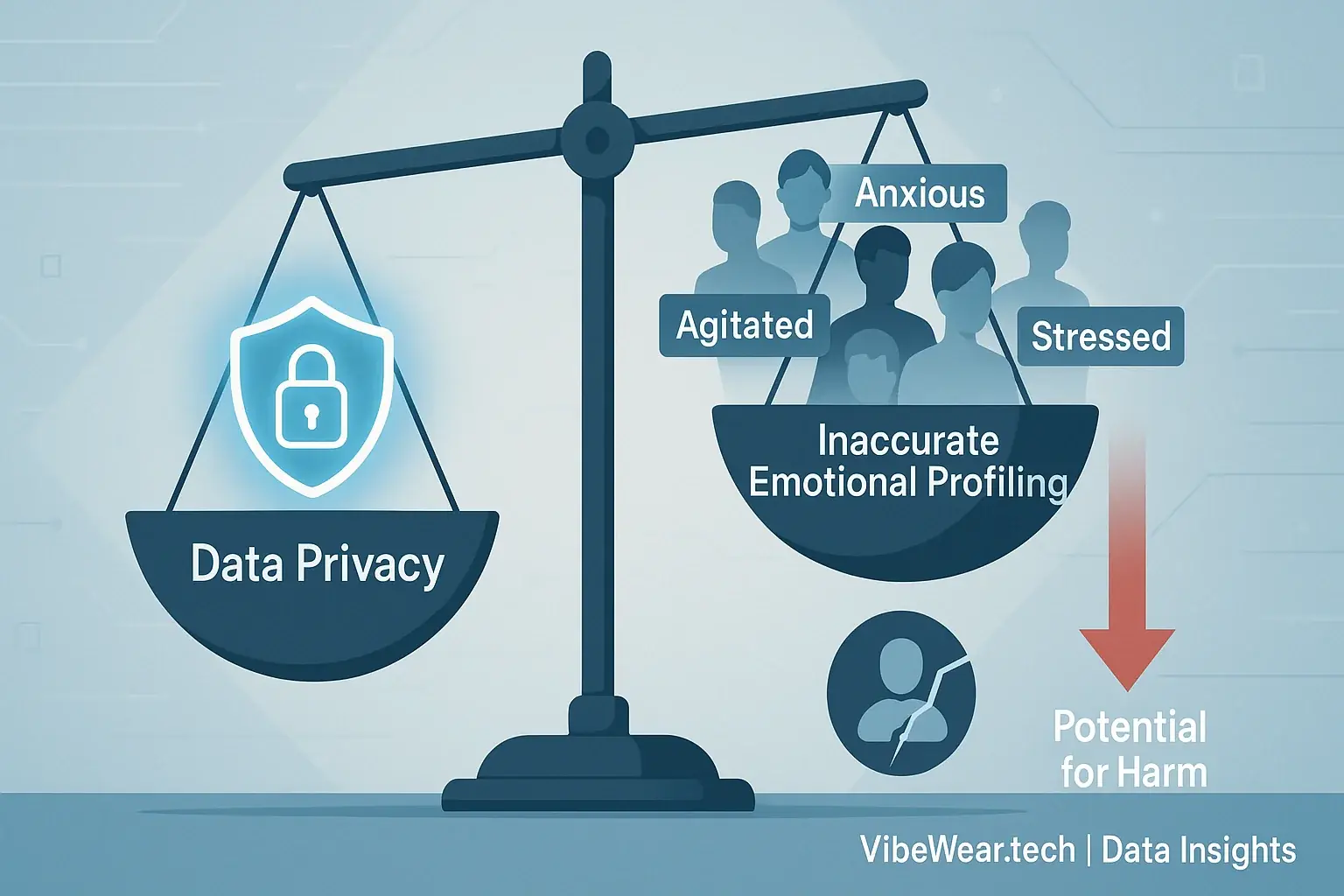
Sensor flaws present serious ethical questions. Imagine your shirt thinks you are constantly anxious. You are just a naturally fidgety person. What happens if that inaccurate data is shared, even anonymously? This misinterpretation directly impacts personal privacy. A significant concern.
Inaccurate mood data fosters mislabeling. This creates flawed emotional profiles. Such profiles could subtly alter your self-perception. Or, they might influence how external parties view you. Consider potential employers or social groups. Sharing misinterpreted emotional data, even anonymized, poses unforeseen privacy risks. This potential for harm is an unspoken truth in mood-adaptive technology discussions.
User control over emotional data is therefore essential. You must retain agency over your own emotional narrative. A machine cannot define your feelings. Manufacturers bear a clear ethical responsibility. They must transparently communicate sensor accuracy limitations and data handling practices. This honesty underpins responsible innovation. It empowers you.
VibeWear champions technology that empowers. Not technology that misrepresents. Understanding sensor limitations becomes a crucial step for users. This awareness promotes responsible adoption of mood-adaptive streetwear. True innovation must always prioritize user well-being and data integrity. Your emotional truth matters.
Beyond Perfection: Embracing the Nuances of VibeWear Accuracy
VibeWear mood sensors provide strong clues. They are tools. Not oracles. Your context shapes sensor data. Individual variability is substantial. Ambient temperature also alters outputs. Grasping these factors is essential. This understanding unlocks true VibeWear value.
Embrace this nuanced view. It enriches your VibeWear experience. Your garment becomes a companion for self-exploration and creative expression. Think of VibeWear as a sophisticated mirror. It reflects clues about your inner state. You interpret the full picture, adding your own context and wisdom.

